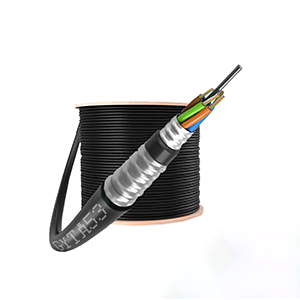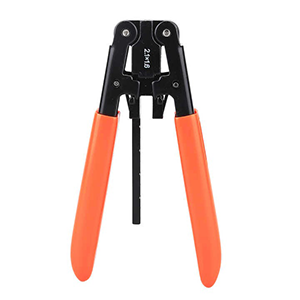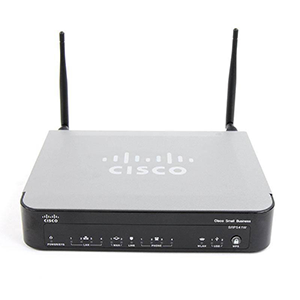The integration of fiber optic networks and Ethernet networks plays an important role in modern communications. This article will explore how to connect fiber optic cables to Ethernet switches. We will first explain the technical differences between fiber optic networks and Ethernet networks and explain the necessity of achieving seamless connection between the two networks.
Next, we will introduce the specific process of connecting fiber optic cables to Ethernet switches in detail, including determining the type of fiber optic interface, installing fiber optic transceiver modules, connecting fiber optic cables, and configuring related network parameters on the switch. We will emphasize the precautions for each step to ensure that the connection process goes smoothly. Finally, we will introduce common faults that may occur when connecting fiber optic cables and provide specific methods for diagnosis and troubleshooting.
Compatibility of Fiber Optic and Ethernet Networks
Let me explain the compatibility issues between fiber optic networks and Ethernet networks:
Technical differences between fiber optic networks and Ethernet networks:
Fiber optic networks and Ethernet networks differ in the following aspects:
- Physical layer technology: Fiber optic uses optical signals for transmission, while Ethernet uses electrical signals for transmission
- Link layer protocol: Fiber optic networks use protocols such as SONET/SDH, while Ethernet uses MAC
- Transmission rate: Fiber optic networks support higher bandwidths, with common rates such as 100G and 400G
- Transmission distance: Fiber optic networks support longer transmission distances, while Ethernet rates are reduced
These technical differences make it impossible for fiber optic networks and Ethernet networks to be directly interconnected.
Necessity of achieving seamless connection between the two networks:
Although there are differences between fiber optic networks and Ethernet networks, they need to be interconnected:
- Fiber optic networks provide high-bandwidth physical transmission channels for Ethernet
- Ethernet networks provide flexible data links and upper layer protocols for fiber optic networks
- The seamless connection between the two can improve the performance and applicability of the entire network
Therefore, appropriate conversion devices, such as Ethernet-fiber optic adapters, are needed in the network architecture to achieve seamless connection and data interaction between fiber optic networks and Ethernet networks. In short, although there are technical differences between fiber optic networks and Ethernet networks, their interconnection is essential for building a high-performance, flexible modern network architecture. The use of appropriate conversion devices can achieve seamless connection between the two networks.
Connection process of optical fiber cable and Ethernet switch
Let me introduce the specific process of connecting optical fiber cable to Ethernet switch in detail:
Determine the optical fiber interface:
- Ethernet switches usually provide optical fiber interfaces such as SFP, SFP+ or QSFP
- Different optical fiber specifications require corresponding interface types, such as single mode or multimode
- Choosing the correct interface type is very important, otherwise it will not be able to connect and communicate normally
Install optical fiber transceiver module:
- Install the optical fiber transceiver module on the corresponding optical fiber interface slot of the switch
- The module should be firmly inserted into the interface to ensure that the interface is well connected
- Pay attention to anti-static during installation to avoid damaging the inside of the module Components
Connecting the fiber optic cable:
- Carefully clean the fiber optic interface and cable end face to ensure that they are clean and dust-free
- Insert both ends of the fiber optic cable into the interfaces of the switch and the other end of the device respectively
- Make sure that the fiber head is inserted in place and fixed to prevent loosening
Configure network parameters:
- Configure the relevant parameters of the fiber optic interface on the switch, such as rate, duplex, etc.
- Ensure that the parameter settings are correct and consistent with the configuration of the connected device
- Correctly configuring parameters can ensure stable and high-speed communication of the fiber optic link
In short, correctly connecting the fiber optic cable to the Ethernet switch requires steps such as determining the interface type, installing the transceiver module, connecting the fiber optic cable, and configuring parameters. Each step requires special attention to ensure that the fiber optic link can work reliably and stably.
Common fault diagnosis and troubleshooting
Let me introduce you to the common faults you may encounter when connecting fiber optic cables and how to troubleshoot them:
Connection failure:
- Symptoms: The fiber optic interface cannot be inserted or is loose
- Diagnosis: Check if the interface is locked or damaged
- Troubleshooting: Try to reinsert or replace the interface
Light source interruption:
- Symptoms: The fiber optic link cannot establish a connection
- Diagnosis : Check if the light source is outputting normally
- Troubleshooting: Check if the light source equipment and interfaces are damaged
Excessive attenuation of optical signal:
- Symptoms: Link connected but transmission quality poor
- Diagnosis: Measure if the fiber attenuation exceeds the standard
- Troubleshooting: Clean the interface, repair the bend or replace the fiber
Excessive light reflection:
- Symptoms: Link connected but intermittent interruption
- Diagnosis: Check if there are too many Fiber optic connector
- Troubleshooting: Adjust connector loss or replace connector equipment
Interface contamination:
- Symptoms: Optical signal distortion or interruption
- Diagnosis: Visually check if the interface is dirty
- Troubleshooting: Carefully clean the fiber optic interface
Fiber break:
- Symptoms: Complete link interruption
- Diagnosis: Use a fault locator to detect the breakpoint
- Troubleshooting: According to the positioning results Repair or replace the broken segment
When diagnosing and troubleshooting, you can take the following steps:
- Visually check if the interface and cable are obviously damaged
- Use test equipment such as optical power meter to detect the optical signal strength
- Use fiber fault locator to find the breakpoint location
- Take appropriate repair or replacement measures based on the test results
Through systematic fault diagnosis and troubleshooting methods, various problems that occur during fiber connection can be effectively solved to ensure the reliability of fiber links.
Summary
Seamlessly integrating fiber networks with Ethernet networks is the key to building high-performance communication infrastructure. Our company has long focused on the research and development and production of optical communication equipment and its core components, and has accumulated rich industry experience. We provide various high-performance fiber transceiver modules that can easily achieve compatible connections with Ethernet switches.
Whether you are in a data center, telecommunications station, or other application scenarios that require the integration of fiber and Ethernet, we can provide you with the most suitable interface solution. Our team of engineers will provide you with professional connection guidance and troubleshooting services to ensure the successful operation of your fiber-Ethernet network integration deployment. Contact us now to learn more.
Fiber Optic Cable Connected to Ethernet Switch FAQ
The key components required are the fiber optic cable, fiber optic transceivers (SFP/SFP+/QSFP) for the Ethernet switch, and compatible fiber optic patch cables.
Ethernet switches typically use SFP (Small Form-factor Pluggable), SFP+, or QSFP (Quad Small Form-factor Pluggable) transceivers to support fiber optic connectivity.
The fiber optic transceiver modules are inserted directly into the designated ports on the Ethernet switch, ensuring a secure and reliable connection.
The steps involve cleaning the fiber optic connectors, inserting the patch cable into the fiber optic transceiver, and ensuring a secure, latched connection on both the switch and cable sides.
Ethernet switches can support both single-mode and multimode fiber optic cables, depending on the specific transceiver used and the requirements of the network infrastructure.
Careful cable routing, slack management, and the use of fiber optic cable management accessories can help maintain the integrity of the fiber optic connections.
The most common connector types are LC and SC, which provide a secure and compact interface for connecting the fiber optic patch cables to the Ethernet switch transceivers.
Tools like optical power meters, visual fault locators, and optical time-domain reflectometers (OTDRs) can be used to verify the integrity and performance of the fiber optic link.
Proper cleaning of connectors, controlled cable bending, and environmental protection of the fiber optic components are crucial for ensuring the long-term reliability of the connection.
When upgrading or replacing transceivers, it is important to ensure compatibility, follow manufacturer guidelines, and document any changes to the network configuration.




